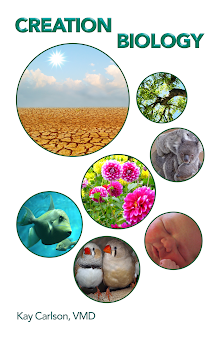The protein
bicoid is used by the DNA in a fruit fly embryo to determine the proteins that will be made by this same DNA. The concentration of bicoid that is diffusing from front to back of the embryo will be detected by the various genes that make up DNA in nuclei (clumps of DNA) that line the walls from the front to back of the embryo. The link I have given in the previous 2 posts for the fruit fly embryo picture is
HERE. I will show the bicoid gene below.
Before I go further, though, I'd like to give you a link to a website that has more reporting on new research that points toward design. It is
Evolution News, the newsletter of Discovery Institute (one of the main "think tanks" for Intelligent Design).
The following ATCG letters are the gene code for bicoid in the fruit fly found on the website FlyBase. (Update in 2019: I had a link from FlyBase at the time of the post but it no longer goes there. I do have a link to the code in another database called KEGG. It is
HERE.)
ATCTCTTCGCTCATCCCTAAATAACGGCACTCTGCAGATGCGAAGCAGTG
GATCGCAAAAACGCAAAATGTGGGCGAAATAAGTTCGCGAGCGTCTCGAA
AGTAACCGGTTACTGAAAATACAAGAAAGTTTCCACACTCCTTTGCCATT
TTTCCGCGCGGCGCTTGGAAATTCGTAAAGATAACGCGGCGGAGTGTTTG
GGGAAAATGGCGCAACCGCCGCCAGATCAAAACTTTTACCATCATCCGCT
GCCCCACACGCACACACATCCGCATCCGCACTCCCATCCGCATCCGCACT
CGCATCCGCACCCACATCACCAACATCCGCAGCTTCAGTTGCCGCCACAA
TTCCGAAATCCCTTCGATTTGGTGAGTTCCCATCGCAGCAGAGAAGGGCT
CTTGTCCCAGGAAAGCTACAGTACAGATTCCCTATGGTGAACAAACAACC
AGTGCGATCACTGATGACCATAAACATTTATTGAGCCGCAGCAAATGTGT
TTCTAGAACATAGGGCGAAATCTTCTATTATCTTGTTTGTGACTTTTAAA
GTATCGTAGCAGAATCTAAAAACCAATTGATATTATTAATCGTTACAGTT
AGTATAGTATATAATTGTATATGAATTGTGGGGCATCATGTTATTAGTGA
TTTGCCGAAATGTTCTAAAAGGTGTTTCATTGAAATGGACGAATGTTAAA
CCTGTTGCACTCACACCGACAATCAGTAATGTCTATTTTTCAAAAGCCAC
ATCTATGGCCACTGGGTATACATTATTGACTTTATACACTTCATACAACA
TATTTTCTAAAACAAGCATTGTTGTCCTGCATGATGATTAGTGAAAGTAA
TATTGCAAGATTCGGTCCCCGAAGCGAATCGTCCTTTCACGTTTTTATAT
AAAGACAGTGTACCCCTTGATTCTTTGAAGCTTTTCGATGAGCGAACGGG
AGCGATAAACTACAACTACATACGTCCGTATCTGCCCAACCAGATGCCCA
AGCCAGGTGAGCTCAAAGCCAACAAAGTCAGCCATCGTCTTATCAGATGT
CTTTCCCTCAGAGGAGCTGCCCGACTCTCTGGTGATGCGGCGACCACGTC
GCACCCGCACCACTTTTACCAGCTCTCAAATAGCAGAGCTGGAGCAGCAC
TTTCTGCAGGGACGATACCTCACAGCCCCCCGACTTGCGGATCTGTCAGC
GAAACTAGCCCTGGGCACAGCCCAGGTGAAGATATGGTTTAAGAACCGTC
GGCGTCGTCACAAGATCCAATCGGATCAGCACAAGGACCAGTCCTACGAG
GGGATGCCTCTCTCGCCGGGTATGAAACAGAGCGATGGCGATCCCCCCAG
CTTGCAGACTCTTAGCTTGGGTGGAGGAGCCACGCCCAACGCTTTGACTC
CGTCACCCACGCCCTCAACGCCCACTGCACACATGACGGAGCACTACAGC
GAGTCATTCAACGCCTACTACAACTACAATGGAGGCCACAATCACGCCCA
GGCCAATCGTCACATGCACATGCAGTATCCTTCCGGAGGGGGGCCAGGAC
CTGGGTCGACCAATGTCAATGGCGGCCAGTTCTTCCAGCAGCAGCAGGTC
CATAATCACCAGCAGCAACTGCACCACCAGGGCAACCACGTGCCGCACCA
GATGCAGCAGCAGCAACAGCAGGCTCAGCAGCAGCAATACCATCACTTTG
ACTTCCAGCAAAAGCAAGCCAGCGCCTGTCGCGTCCTGGTCAAGGACGAA
CCGGAGGCCGACTACAACTTCAACAGCTCGTACTACATGCGATCGGGAAT
GTCTGGCGCCACTGCATCGGCATCCGCTGTGGCCCGAGGCGCTGCCTCGC
CGGGCTCCGAGGTCTACGAGCCATTAACACCCAAGAATGACGAAAGTCCG
AGTCTGTGTGGCATCGGCATCGGCGGACCTTGCGCCATCGCCGTTGGCGA
GACGGAGGCGGCCGACGACATGGACGACGGAACGAGCAAGAAGACGACGC
TACAGGTCAGGCATGAGTCCACAACCTTTTTTGATCTCTTGATTCTGAGT
GTGGCGTTTATAAATTGAAGCTTTAAGCTTTGTAACTTTCAAACTGTCTG
GTTTGAGATGTTATTCTGAAAGTACTTCTATTTCCGATCGATGAGATTTG
GGAGTTCTCCAATATTTAACATTTAACTTATTAAGTTTTTGTTTTCTAAA
TTAGACATGGCATTTCTGAAAGGGAAGTACAAGTGTTAAAGATGTATTTT
AATATAGAATTTGTATCAAAGGTTAAGATTTCAACCGTTTGAAAGCCCTT
AGTTTTCAGGGTTTTTTACTTTTTTATTCATGTAATCACTCTTAATACAC
TGCAAGTTAAAATAGCATTTCTTTGACCAGAAAAATAAGATCTATGCATT
TTAAAAGTGAAAACAGACTCATATGCTGATGAACATTTTTAGCTATAAAT
TGTAACAATAATTTAGCAATTTCAATCGAATTTATTTATGTTCTAAATGC
GTTCGCTCTCTCCCTAGATCTTGGAGCCTTTGAAGGGTCTGGACAAGAGC
TGCGACGATGGCAGTAGCGACGACATGAGCACCGGAATAAGAGCCTTAGC
AGGAACCGGAAATCGTGGAGCGGCATTTGCCAAATTTGGCAAGCCTTCGC
CCCCACAAGGCCCTCAGCCGCCCCTCGGAATGGGGGGCGTGGCCATGGGC
GAATCGAACCAATATCAATGCACGATGGATACGATAATGCAAGCGTATAA
TCCCCATCGGAACGCCGCGGGCAACTCGCAGTTTGCCTACTGCTTCAATT
AGCCTGGATGAGAGGCGTGTTAGAGAGTTTCATTAGCTTTAGGTTAACCA
CTGTTGTTCCTGATTGTACAAATACCAAGTGATTGTAGATATCTACGCGT
AGAAAGTTAGGTCTAGTCCTAAGATCCGTGTAAATGGTTCCCAGGGAAGT
TTTATGTACTAGCCTAGTCAGCAGGCCGCACGGATTCCAGTGCATATCTT
AGTGATACTCCAGTTAACTCTATACTTTCCCTGCAATACGCTATTCGCCT
TAGATGTATCTGGGTGGCTGCTCCACTAAAGCCCGGGAATATGCAACCAG
TTACATTTGAGGCCATTTGGGCTTAAGCGTATTCCATGGAAAGTTATCGT
CCCACATTTCGGAAATTATATTCCGAGCCAGCAAGAAAATCTTCTCTGTT
ACAATTTGACATAGCTAAAAACTGTACTAATCAAAATGAAAAATGTTTCT
CTTGGGCGTAATCTCATACAATGATTACCCTTAAAGATCGAACATTTAAA
CAATAATATTTGATATGATATTTTCAATTTCTATGCTATGCCAAAGTGTC
TGACATAATCAAACATTTGCGCATTCTTTGACCAAGAATAGTCAGCAAAT
TGTATTTTCAATCAATGCAGACCATTTGTTTCAGATTCGGAGATTTTTTG
CTGCCAAACGGAATAACTATCATAGCTCACATTCTATTTACATCACTAAG
AAGAGCATTGCAATCTGTTAGGCCTCAAGTTTAATTTTAAAATGCTGCAC
CTTTGATGTTGTCTCTTTAAGCTTTGTATTTTTAATTACGAAAATATATA
AGAACTACTCTACTCGGGT
Each of these letter stands for what is called a nucleotide, which is made up of atoms. A picture of one of them, thymine (T) is here:

The atoms are C for carbon, O for oxygen, H for hydrogen and N for nitrogen. You would have to substitute one of these nucleotides for each of the letters of bicoid gene that is above to give one strand of the DNA. This alone does not present the whole picture of complexity, because the DNA of the embryo has parts which detect the concentrations of bicoid that the mother's cells stimulate into production inside the new embryo which in turn set the embryo bicoid gene into motion. Some embryo DNA genes are sensitive to high concentrations of bicoid, some are sensitive to less concentrations.
The fruit fly has 180 million pairs of nucleotides. Half of a nucleotide pair is shown in the picture. The organism uses these nucleotides as a blueprint to make all the body parts like head, eyes, legs, thorax, and systems of its body, including muscle, nerve, breathing, circulatory, hormonal, digestive and reproductive systems.
The human being has 3.6 billion of these nucleotide pairs in one set of Chromosomes. John Lennox goes through some of the probabilities for the atoms and molecules to come to these structures by chance in his book,
God's Undertaker: Has Science Buried God? (Oxford: Lion, 2007). He teaches math at Oxford University. It comes down to being impossible. He suggests we look at life like we have come to understand perpetual motion machines--that it just doesn't happen by the laws of nature.
Combine that with the findings of the article, Koonin and Wolf,
"Genomics of bacteria and archaea: the emerging dynamic view of the prokaryotic world," Nucleic Acids Research 36, 21 (1 Dec. 2008): 6688-6719l. Eugene Koonin and Yuri Wolf are researchers at the National Center for Biotechnology Information (NCBI). The proteins of bacteria are unlike those of other animals and plants. There is not a smooth line of evolution and there is not enough time for all these proteins to have come into working order even in billions of years. Yes, there may be small changes to bring about some variety in species. But for the most part, something else must be involved.
I am not an expert at reading gene graphs and knowing all the in's and out's of genes. I'm not an expert mathematician or chemist or physicist. Which one person is all of these put together? I know enough to know organisms did not come about by chance. That is because it is
obvious. To paraphrase Paul in Romans 1 of the Bible, we can see the magnificent divine nature of God from what is made. These days, because of all that is known, one can look more closely and dig deeper, but the phenomenal majesty of the world still is there to see.












